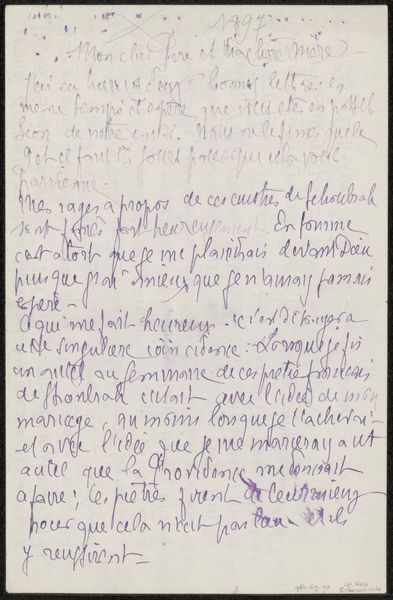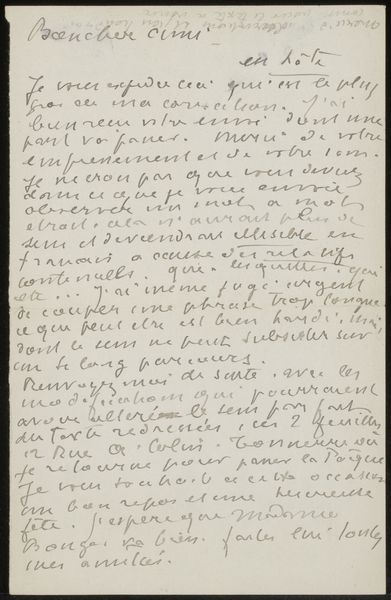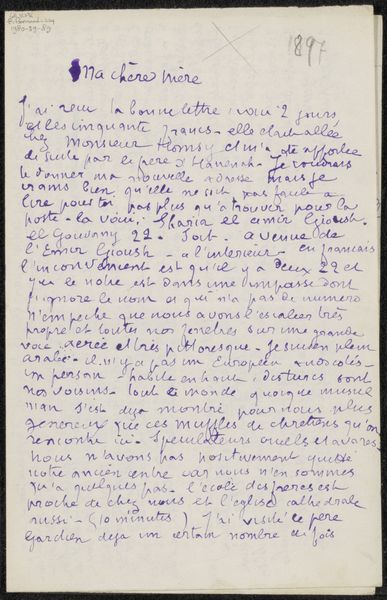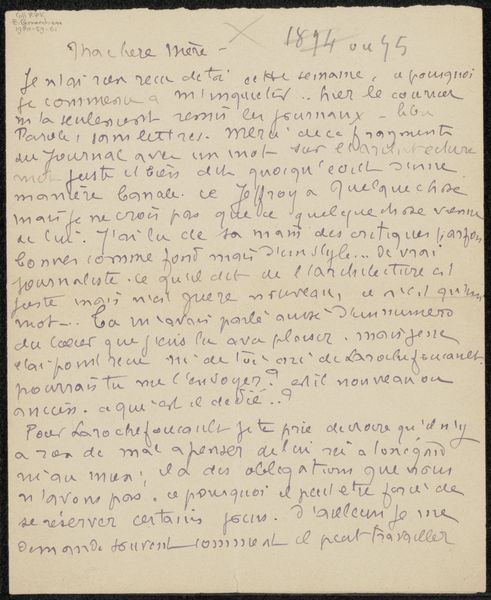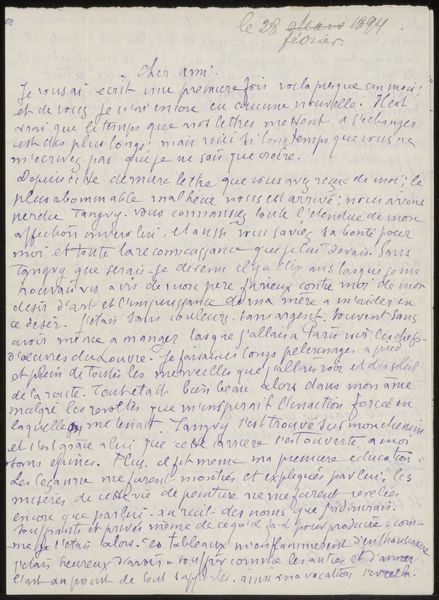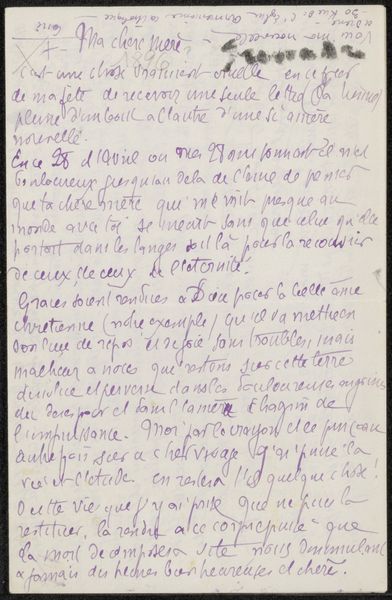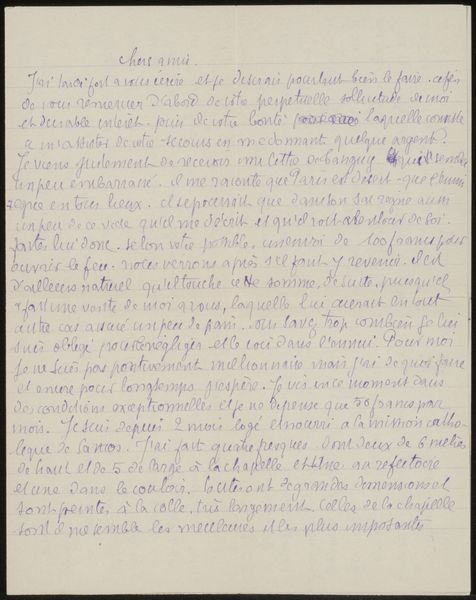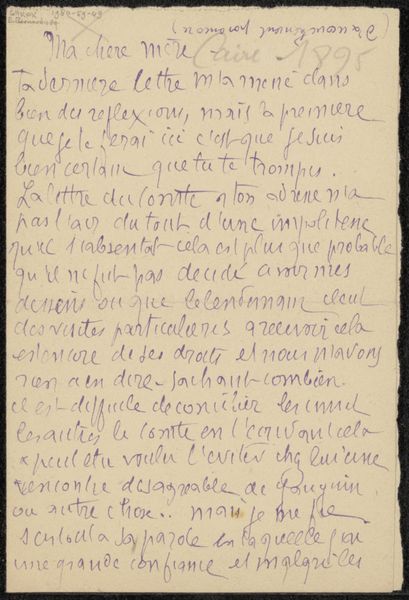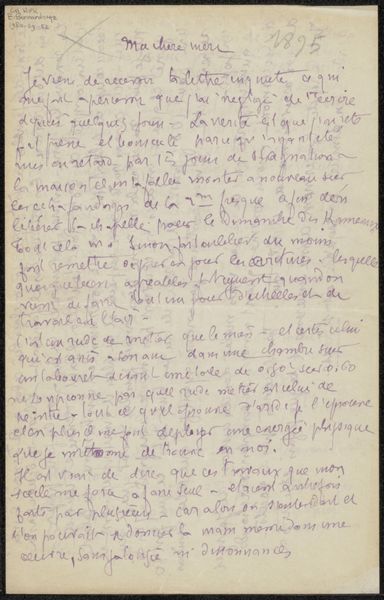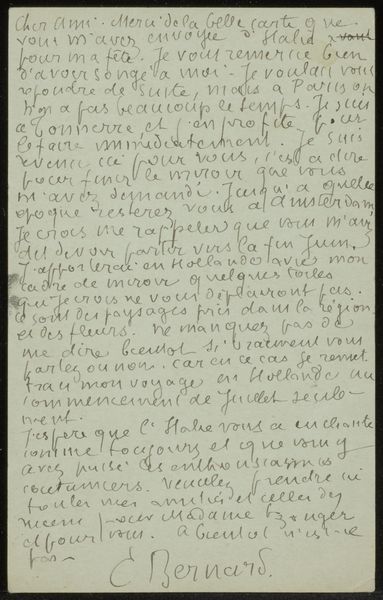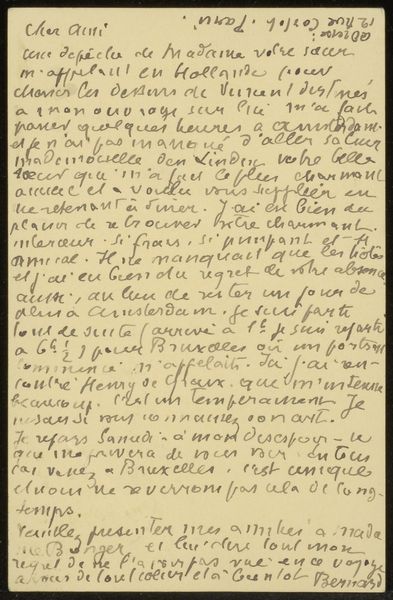
drawing, paper, ink
#
portrait
#
drawing
#
paper
#
ink
#
post-impressionism
Copyright: Rijks Museum: Open Domain
Editor: This is "Brief aan Andries Bonger," a letter by Émile Bernard from 1895. It's ink on paper. The handwriting gives it an intimate feel, like we're peering into a private conversation. How do you interpret this work, looking at it as more than just a letter? Curator: Well, consider the context. Bernard was part of a Post-Impressionist circle grappling with modernity, with social upheaval, much like we see today. Letters weren't just personal; they were vital for artistic discourse, for forming communities of resistance against dominant academic art. Editor: So, this letter could be seen as a document of artistic and social connection? Curator: Precisely. The act of writing itself becomes a political act. It's claiming space, asserting his voice within a shifting art world. The intimacy you mentioned challenges the formal, often exclusionary, art establishment. Whose voices were being excluded, do you think, at this time? Editor: Primarily women and people from marginalized communities. This makes Bernard’s choice to communicate through something so accessible almost defiant. Curator: Exactly! And ink, a relatively inexpensive medium, connects with those denied access to oils or canvas. It asks us to question the traditional hierarchies of artistic expression. What does the very personal tone of the letter imply, given this background? Editor: It feels like an attempt to build solidarity, a personal plea for understanding and connection within the group. Almost as if a conversation could push back against something oppressive… Curator: It does. Perhaps the simple sharing of thoughts becomes an act of building power and creating room for change and creativity to flourish, through dialogue and shared understanding. Editor: That's fascinating; seeing this letter not just as correspondence, but as part of a larger push for artistic and social change really reframes how I understand it. Curator: Indeed. Art and life are interconnected, aren't they? Understanding this gives greater dimension to artwork created throughout history and today.
Comments
No comments
Be the first to comment and join the conversation on the ultimate creative platform.
